Abstract
A statement by a famous contemporary novelist is presented that indicates how he and others, independently of formal behaviorism, used behavioristic methods—specifically, self-recording charts and regularly scheduled daily work hours—to accelerate and maintain their writing outputs. On the basis of his statement and an analysis of his self-recorded data, it is argued that a meaningful and useful analogy can be drawn between writing a novel and emitting a simple operant response on a fixed-ratio schedule.
Keywords: self-control, self-recording, self-reinforcement, fixed-ratio schedules, novel writing, famous novelists
Full text
PDF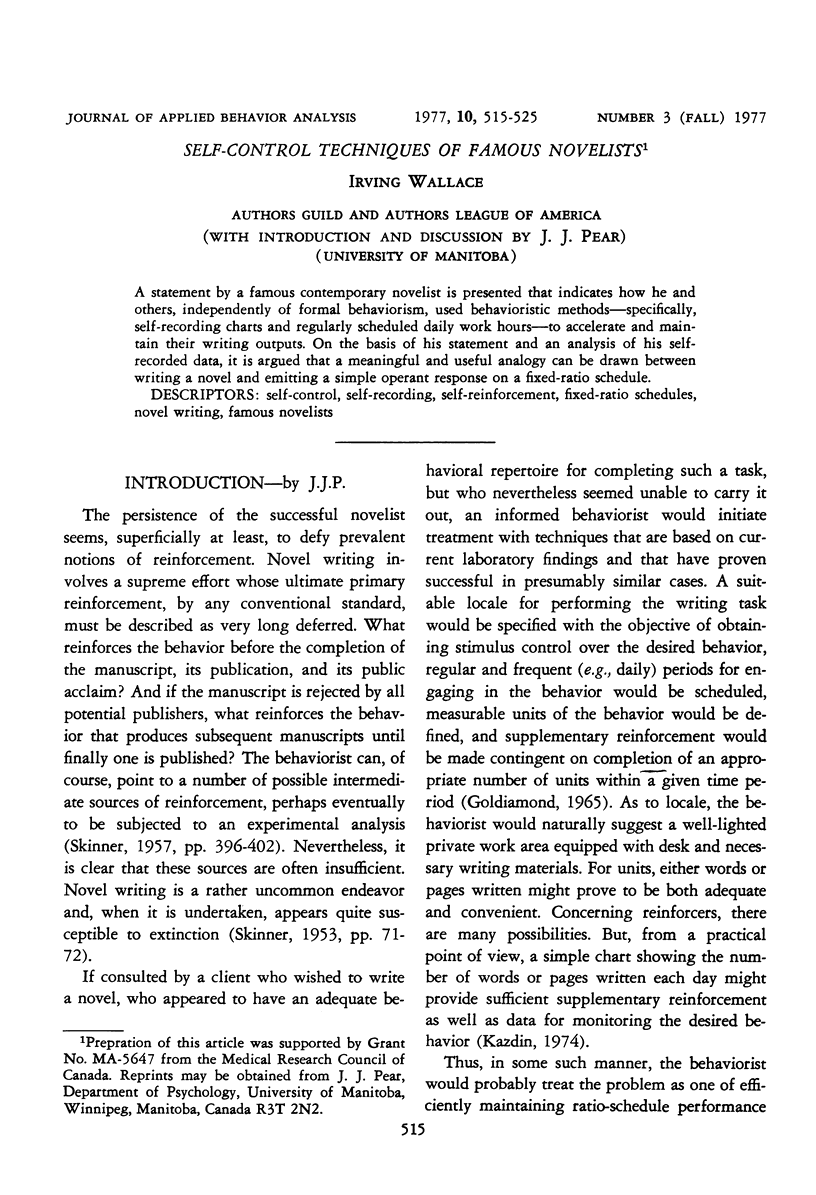
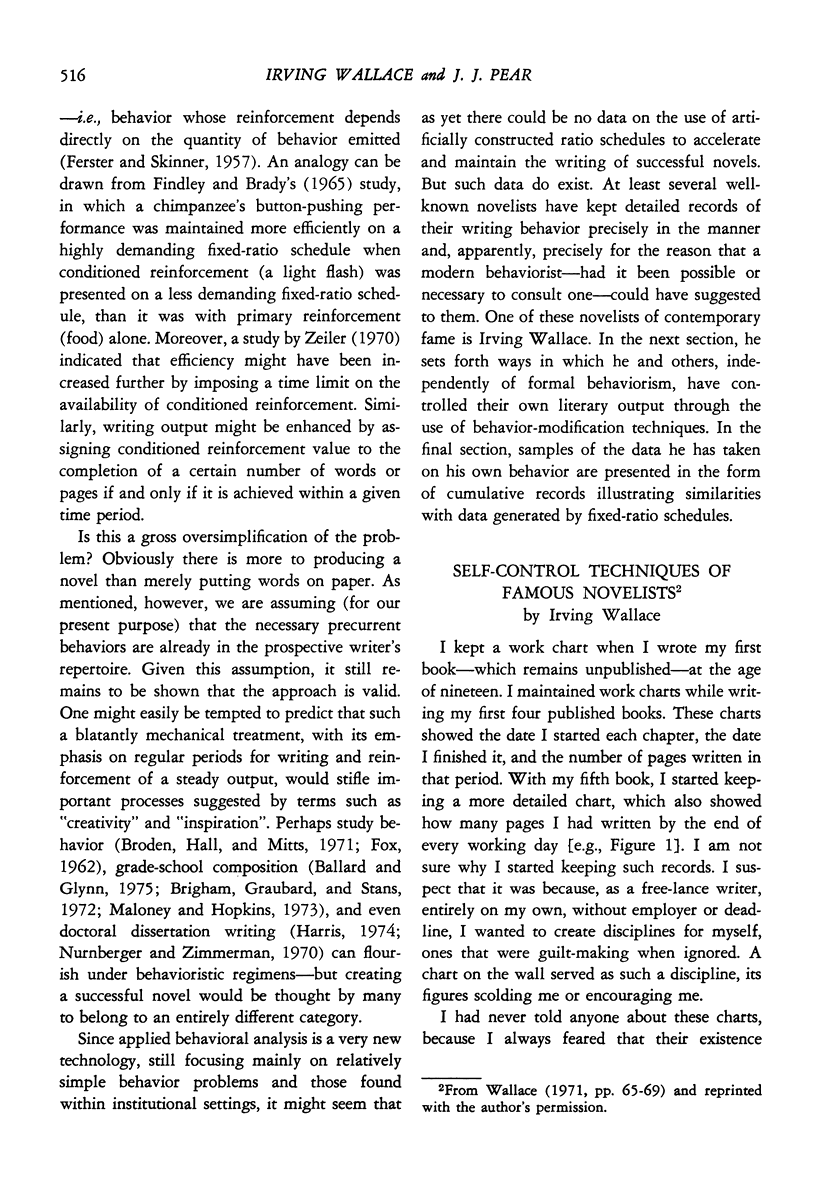
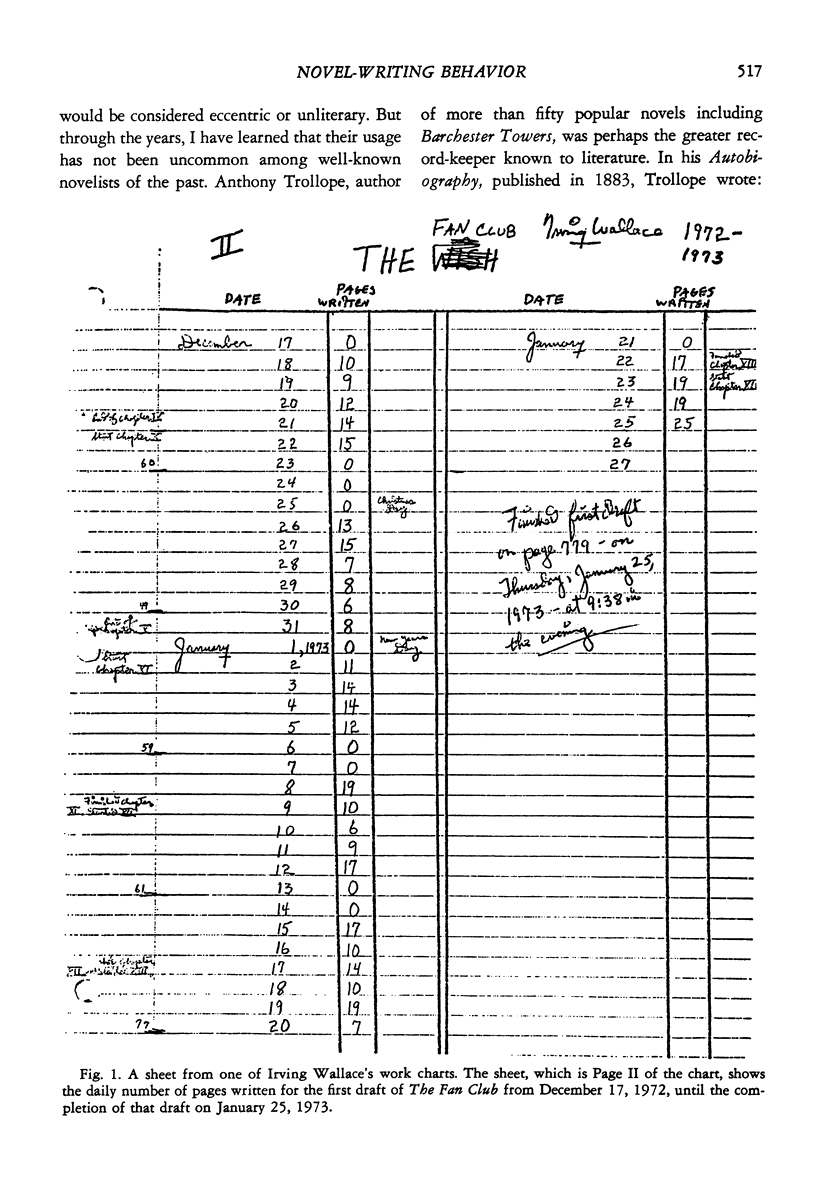
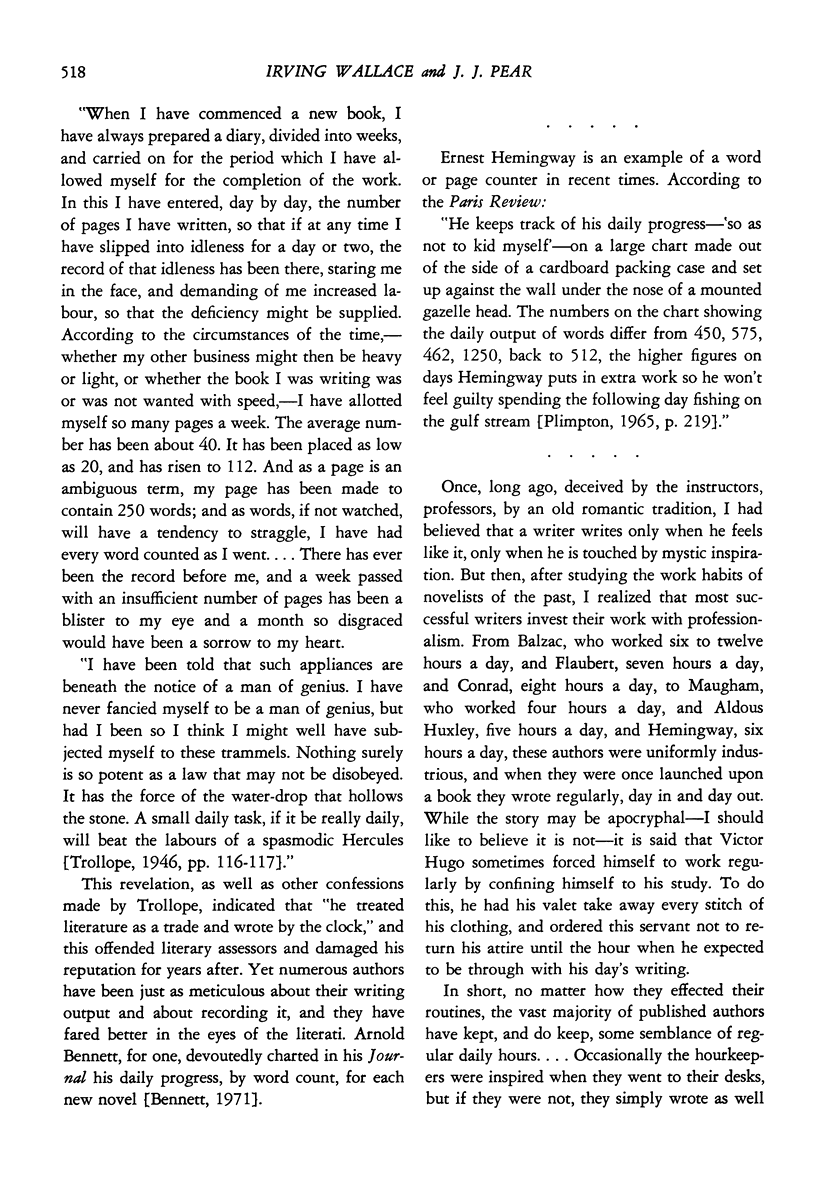
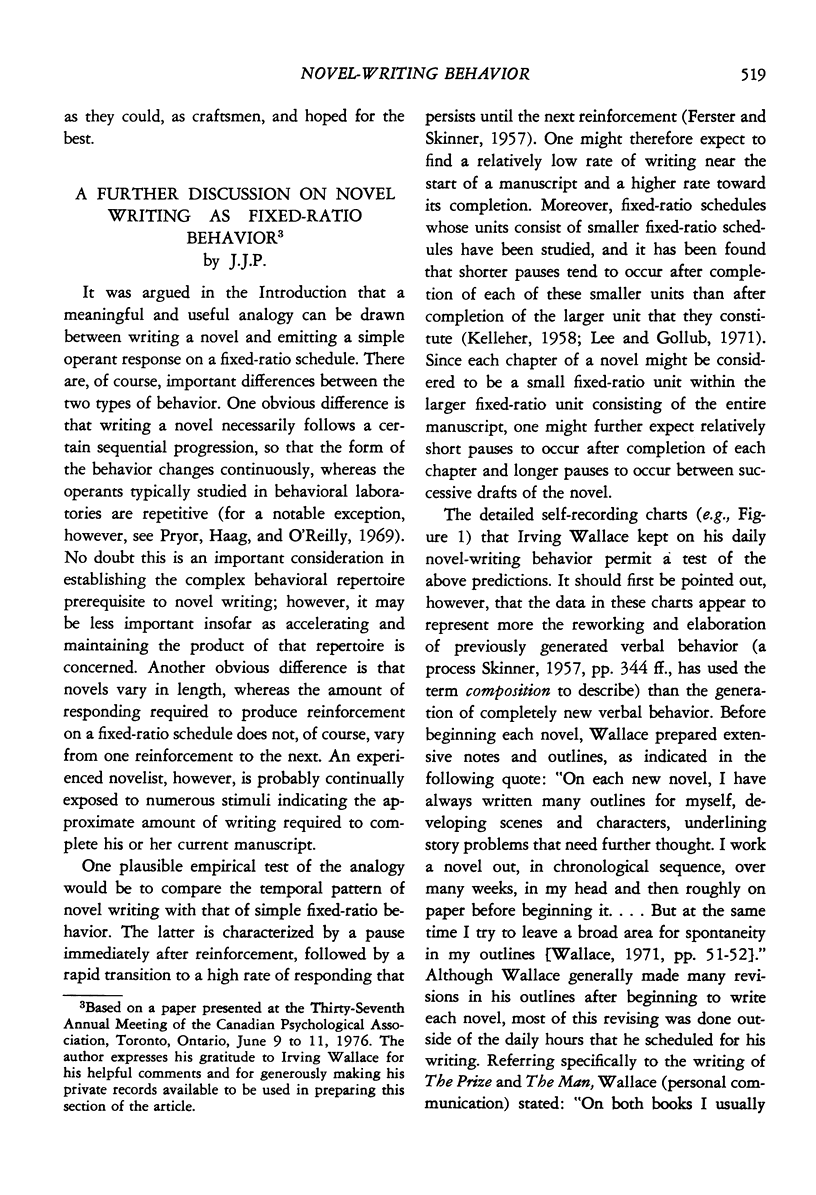
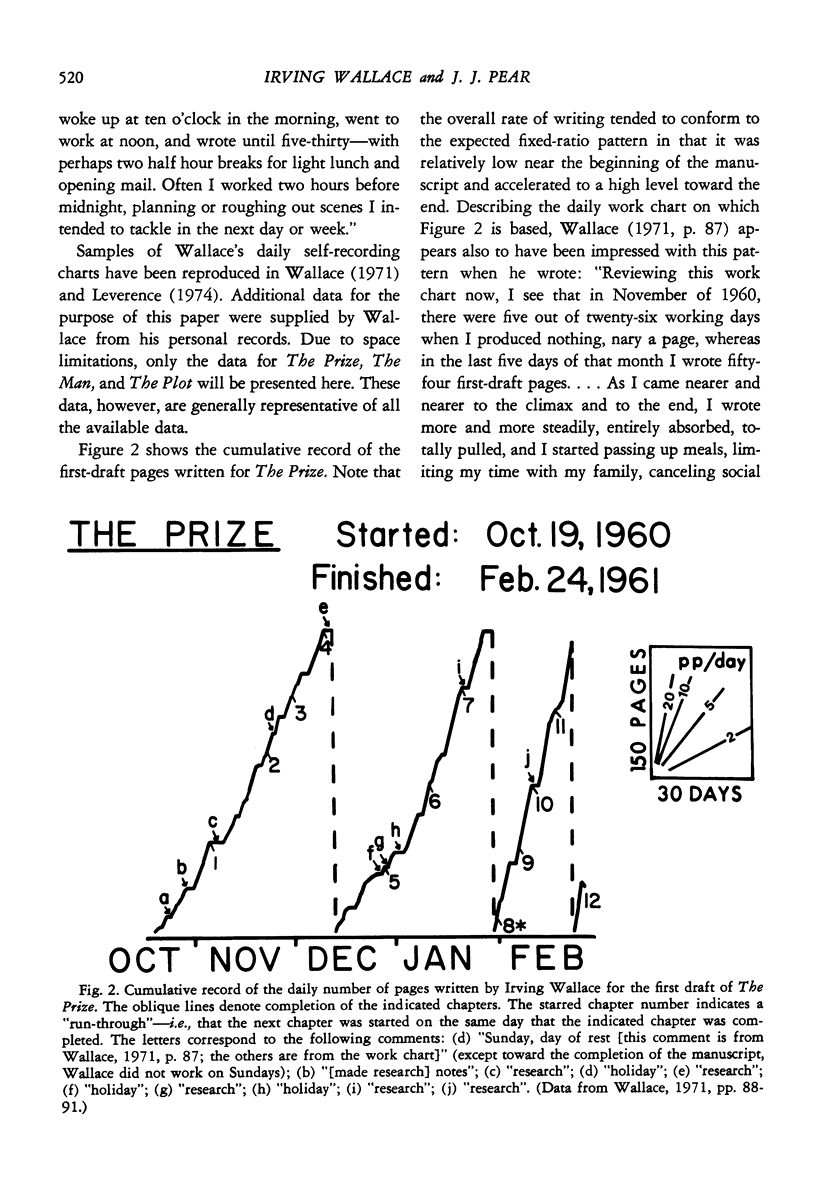
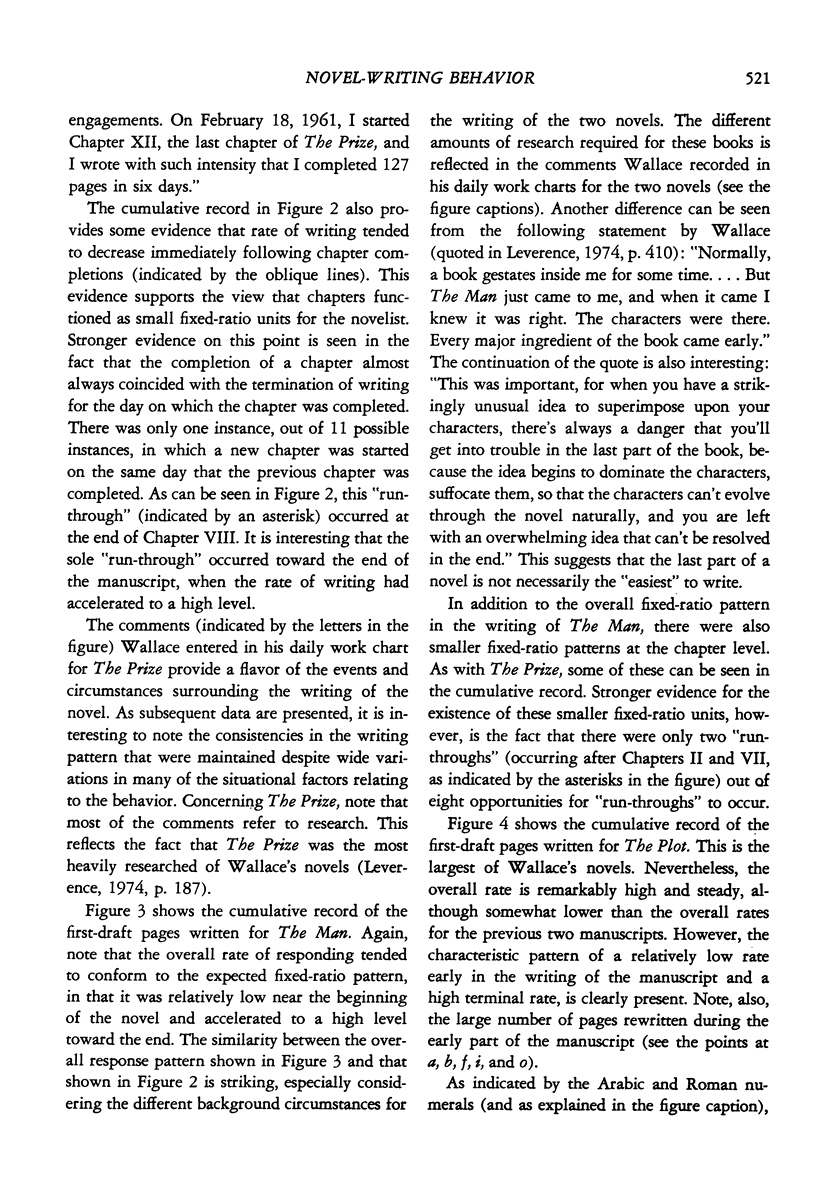

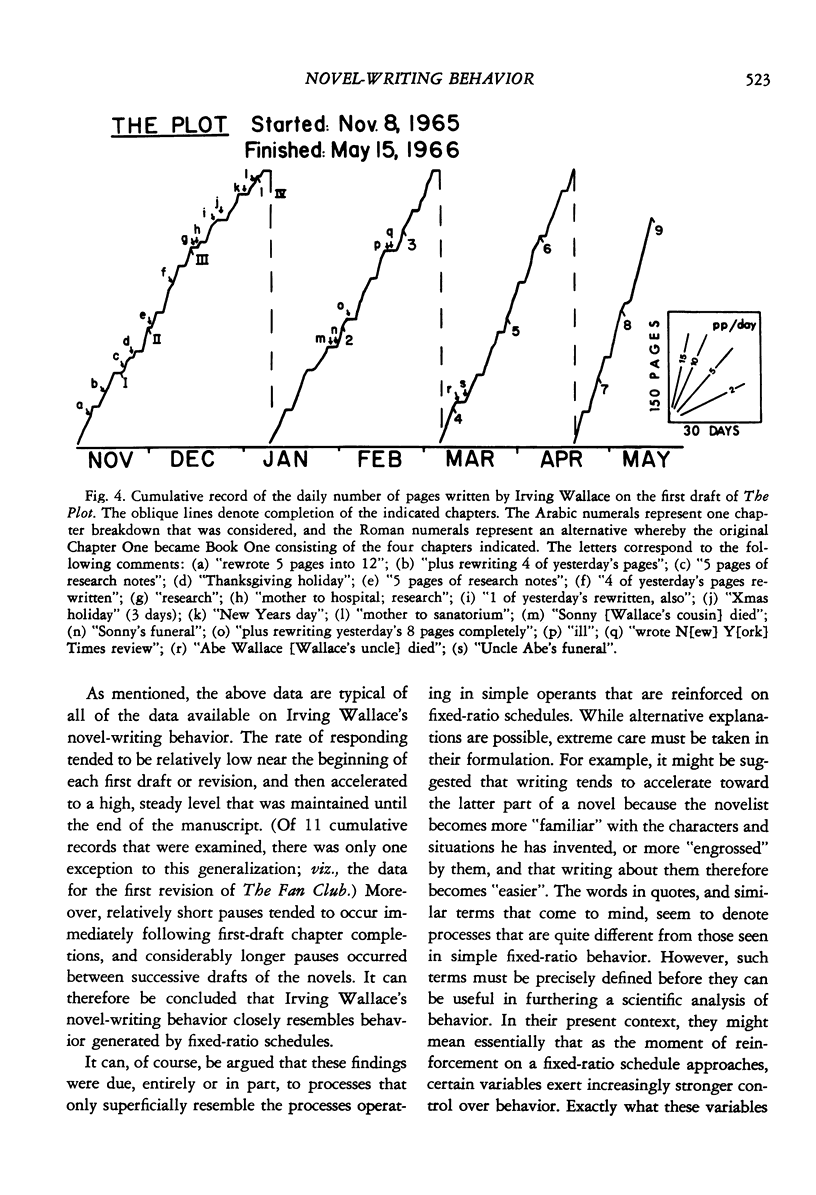
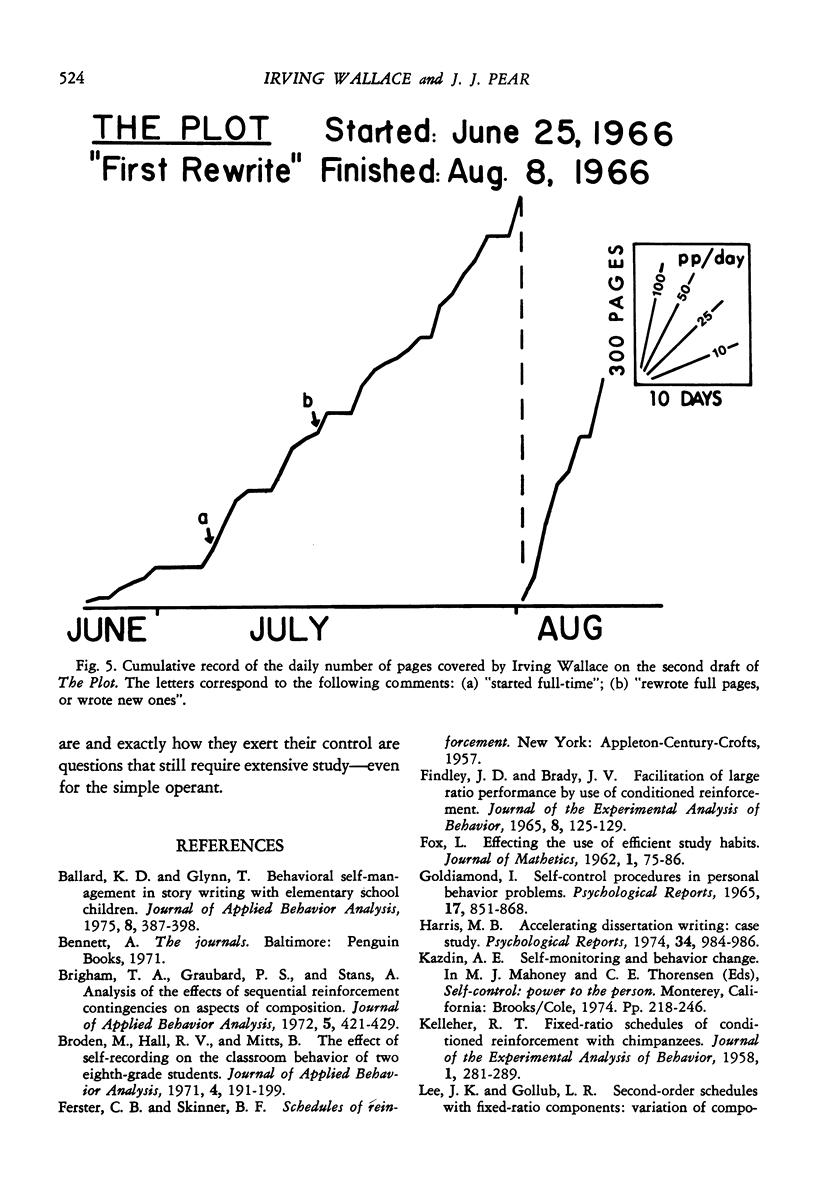
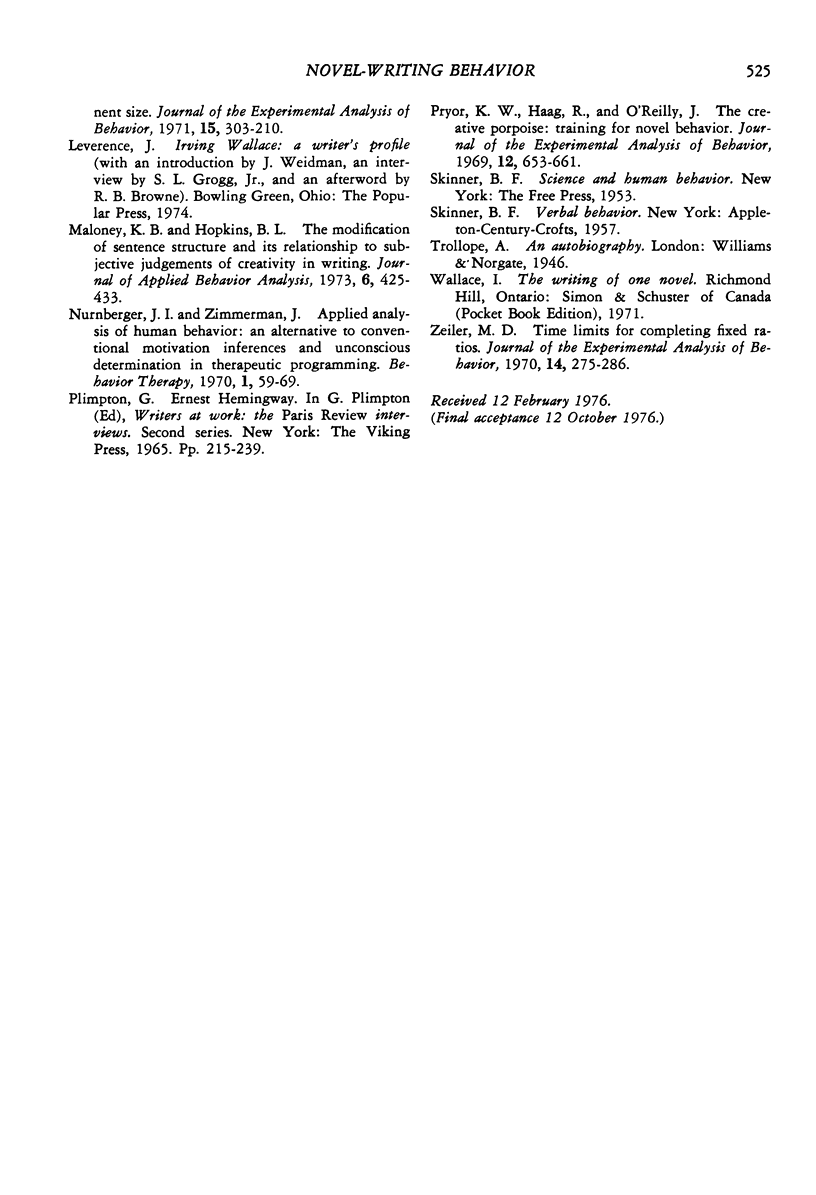
Selected References
These references are in PubMed. This may not be the complete list of references from this article.
- Ballard K. D., Glynn T. Behavioral self-management in story writing with elementary school children. J Appl Behav Anal. 1975 Winter;8(4):387–398. doi: 10.1901/jaba.1975.8-387. [DOI] [PMC free article] [PubMed] [Google Scholar]
- Brigham T. A., Graubard P. S., Stans A. Analysis of the effects of sequential reinforcement contingencies on aspects of composition. J Appl Behav Anal. 1972 Winter;5(4):421–429. doi: 10.1901/jaba.1972.5-421. [DOI] [PMC free article] [PubMed] [Google Scholar]
- Broden M., Hall R. V., Mitts B. The effect of self-recording on the classroom behavior of two eighth-grade students. J Appl Behav Anal. 1971 Fall;4(3):191–199. doi: 10.1901/jaba.1971.4-191. [DOI] [PMC free article] [PubMed] [Google Scholar]
- FINDLEY J. D., BRADY J. V. FACILITATION OF LARGE RATIO PERFORMANCE BY USE OF CONDITIONED REINFORCEMENT. J Exp Anal Behav. 1965 Mar;8:125–129. doi: 10.1901/jeab.1965.8-125. [DOI] [PMC free article] [PubMed] [Google Scholar]
- Goldiamond I. Self-control procedures in personal behavior problems. Psychol Rep. 1965 Dec;17(3):851–868. doi: 10.2466/pr0.1965.17.3.851. [DOI] [PubMed] [Google Scholar]
- Kelleher R. T. Fixed-ratio schedules of conditioned reinforcement with chimpanzees. J Exp Anal Behav. 1958 Aug;1(3):281–289. doi: 10.1901/jeab.1958.1-281. [DOI] [PMC free article] [PubMed] [Google Scholar]
- Lee J. K., Gollub L. R. Second-order schedules with fixed-ratio components: variation of component size. J Exp Anal Behav. 1971 May;15(3):303–310. doi: 10.1901/jeab.1971.15-303. [DOI] [PMC free article] [PubMed] [Google Scholar]
- Maloney K. B., Hopkins B. L. The modification of sentence structure and its relationship to subjective judgements of creativity in writing. J Appl Behav Anal. 1973 Fall;6(3):425–433. doi: 10.1901/jaba.1973.6-425. [DOI] [PMC free article] [PubMed] [Google Scholar]
- Pryor K. W., Haag R., O'reilly J. The creative porpoise: training for novel behavior. J Exp Anal Behav. 1969 Jul;12(4):653–661. doi: 10.1901/jeab.1969.12-653. [DOI] [PMC free article] [PubMed] [Google Scholar]
- Zeiler M. D. Time limits for completing fixed ratios. J Exp Anal Behav. 1970 Nov;14(3):275–286. doi: 10.1901/jeab.1970.14-275. [DOI] [PMC free article] [PubMed] [Google Scholar]


